Maintenance & Repairs

No Cost Solar Systems Explained
Solar power has helped many homes across Australia and the world to receive clean, cheap and reliable energy. Throughout its life in the market, solar and renewable technologies have come a long way, with the introduction of solar batteries, higher efficiency components and monitoring platforms that feature capabilities far beyond what we’ve seen previously. Since the widespread introduction of residential solar installations, the government has increasingly acknowledged and supported the need for sustainable sources of electricity by introducing a number of rebates and incentives. Essentially, this means that these days, installing a solar system can cost you next to nothing! You may have heard the phrase ‘no cost solar system’ thrown around, a prime example of government support making renewable energy more accessible. Today, we’ll unpack what this means and how it could benefit your home.
Key Takeaways:
No Upfront Cost Solar – Some solar retailers offer systems with no initial investment through agreements like Power Purchase Agreements (PPAs) or solar leases, making solar energy more accessible.
How It Works – Under a PPA, you pay for the electricity your system generates at a lower rate than traditional providers, while the retailer installs, maintains, and owns the system.
Pros & Cons – Benefits include immediate savings, no installation costs, and maintenance coverage. Downsides include lack of ownership, long-term contracts (20–25 years), and lower savings compared to owning a system outright.
Eligibility Requirements – To qualify, you must be a homeowner, have a suitable property, meet credit score criteria, and live in a location with sufficient sunlight.
What is $0 Solar Power?
Essentially, your chosen solar/energy retailer, whoever you purchase your system from, will design, install and maintain your system with no initial investment. This will allow more homes to benefit from solar energy without bearing the sudden financial burden.
Making Sense of Solar with No Upfront Costs
You may have heard the phrase ‘No Cost Solar’ or ‘$0 Solar Installations’ throughout your journey. And while yes, this statement may sound obscene, it is a possibility. Hearing the words “zero cost” in reference to a solar installation, which usually costs thousands, leaves many feeling this could be too good to be true. While nothing is completely free, this program is a fantastic way of making clean energy systems more accessible and affordable for Australian homes.
How Do Companies Afford to Offer No Cost Solar Systems?
Under this program, eligible and participating retailers will install a solar (and storage) system on your property and maintain it with no upfront costs incurred by you. But how is this possible?
Offering zero-cost solar systems is done through what’s called a ‘Solar Power Purchase Agreement (PPA)’. This is a straightforward option with limited risk for those looking for solar but are hesitant about footing the considerable cost of clean energy. Essentially, this means once the system is installed, you will pay your solar retailer for the electricity produced over a fixed period. You may wonder, if I’m still paying for power, why bother installing the solar system? Well, the energy produced by the solar system comes at a heavily discounted rate, allowing you to benefit from considerable solar savings.

What's Included in a No Cost Solar Installation?

Hardware (Physical Components)
this will usually include your solar panel or PV module array, your solar inverter, solar battery, wiring, mounting racks and any other components necessary for system production.

Installation of Your Solar System
your chosen solar retailer will design your system or you using your energy usage patterns, roof layout, power requirements and average consumption.
They will then carry out the installation with accredited installers to ensure system efficiency, longevity and the safety of your home.
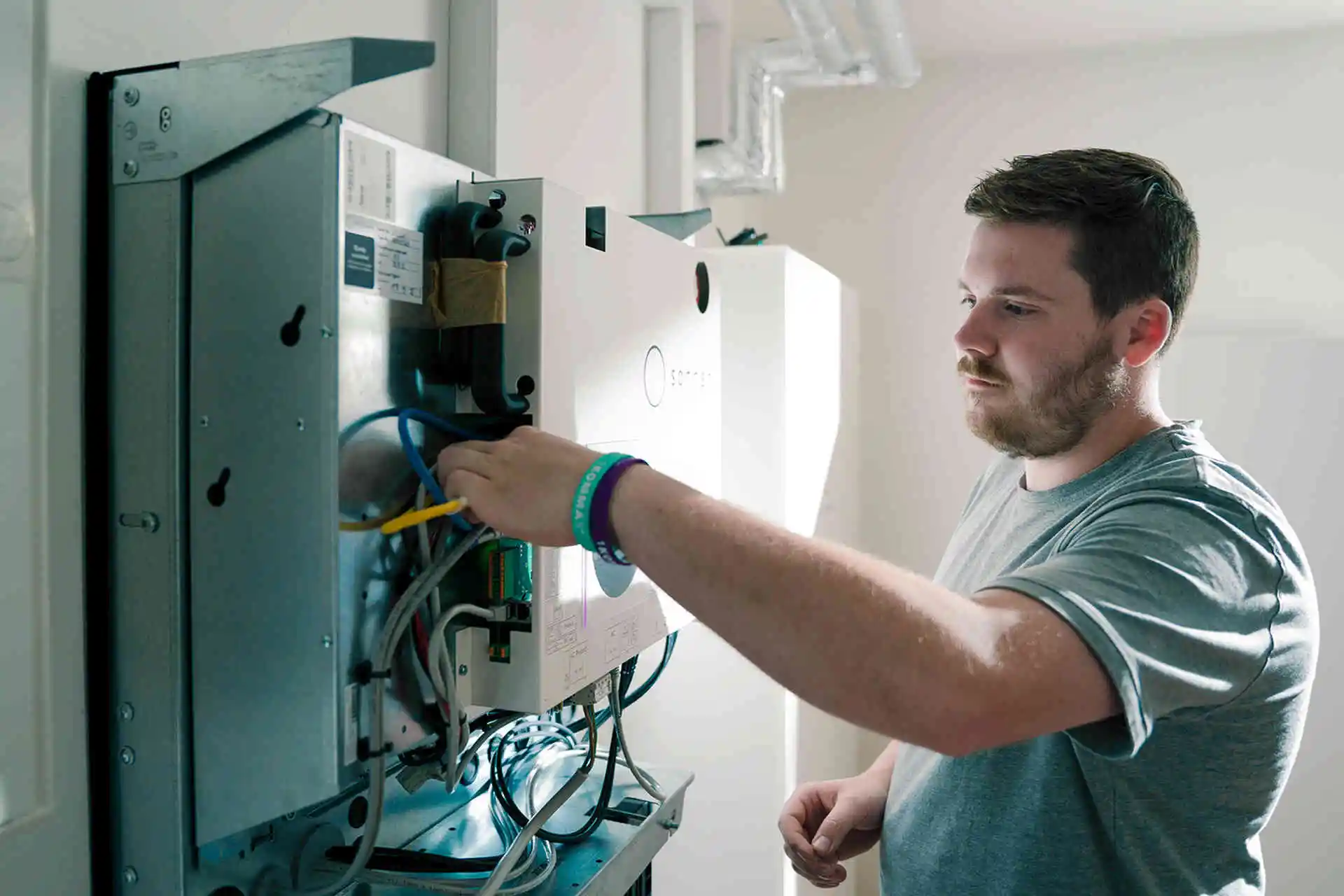
Over the course of the agreement held with your solar retailer, they will cover any repairs or replacements necessary as well as carrying out regular checks and maintenance on the equipment.
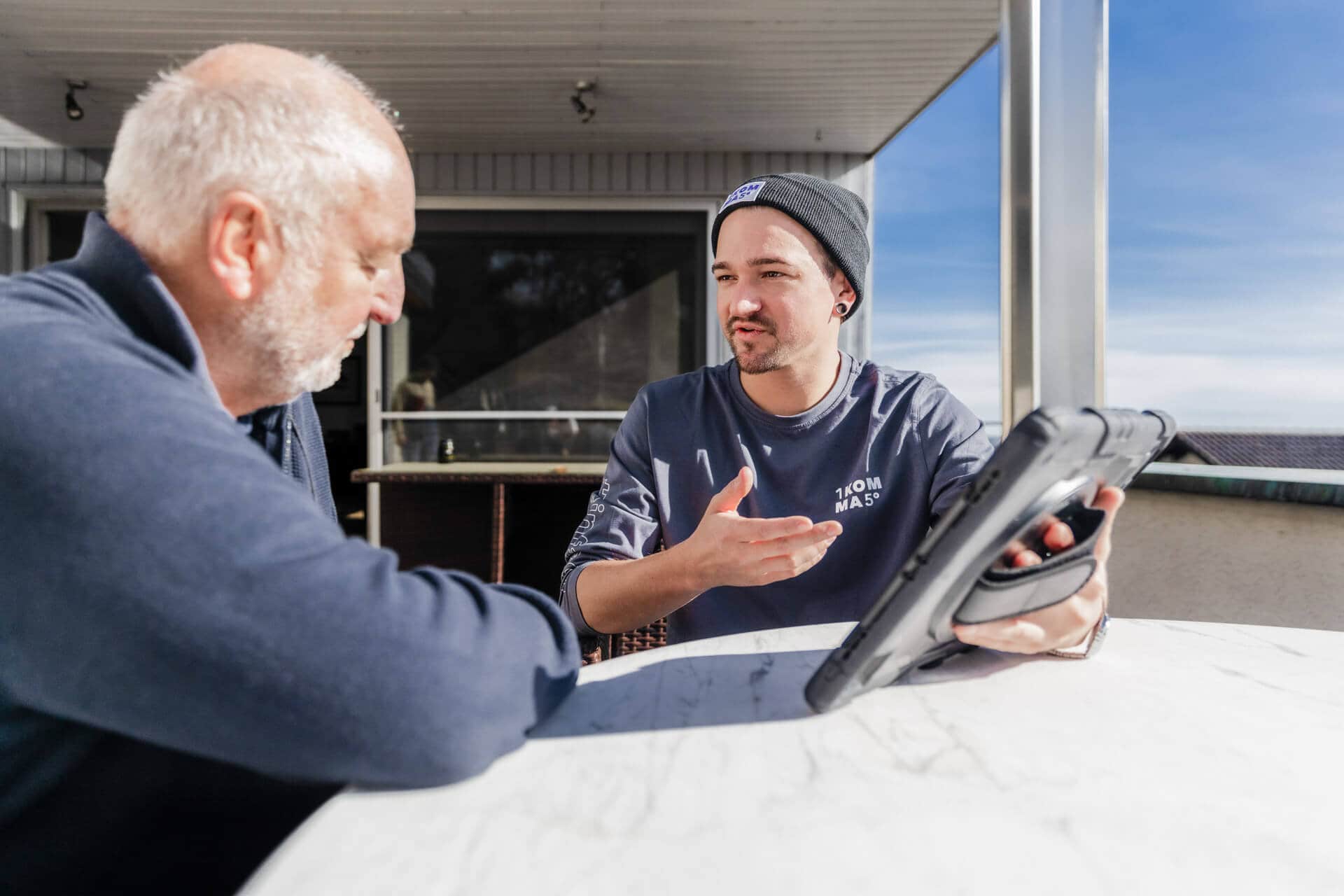
After Sale Support
your solar system will likely include 24/7 system monitoring, but should anything go wrong you’ll receive comprehensive support and have all your questions answered.
Different Kinds of No Cost Solar Agreements
When it comes to solar energy with no upfront costs, there are two main options you can choose from. They both ensure that the initial out-of-pocket expense for homeowners is either considerably lessened or eliminated.
1. Solar Lease
This is fairly self-explanatory - you're essentially leasing all the necessary equipment from your solar retailer for a fixed monthly fee, similar to a rental agreement.


2. Power Purchase Agreement (PPA)
This is the more widely known/used format for offering no-cost solar systems. You pay for the electricity your solar system produces at a discounted rate.
Evaluation of No Cost Solar
Benefits of a No Cost Solar System:
You’re probably already familiar with the many benefits of solar power, but this isn’t necessarily a possibility for many people. The initial investment is offputting for many homeowners, even those who benefit most from a solar installation. This program aims to increase the accessibility of clean energy, making it a more widespread avenue for generating, purchasing and consuming electricity. That’s the more generalised big-picture benefit of no-cost solar, now let’s take a look at the more specific advantages:

Pay less on your power bills: Solar energy can significantly reduce your bill. Even though you’re still paying your solar retailer for the energy you use, this is considerably less than if you were to buy power from traditional energy providers, as no initial investment is required.
Easy and efficient installation process: The solar company providing the work is entirely responsible for designing, installing, setting up, and maintaining your solar system. Thus, you can relax while your solar installers take care of everything else.
Secure your energy at a better rate for years to come. It’s no secret that electricity prices are steadily rising and will continue to rise. Many Australian homes are installing solar panels to offset their energy bills. If outright paying for and installing a solar system isn’t an option, this is a great way to ensure the recurring energy cost remains low.
Start saving from day one: As there is no initial cost to you with this type of agreement, you can start enjoying solar savings immediately. No need to worry about the ROI or payback period of the system.
Drawbacks of a No Cost Solar System:
While no cost solar is widely regarded as an excellent way to encourage the uptake of clean energy solutions, helping Australian homes to install solar without being out of pocket. But that being said, these agreements don’t come without their challenges, which could potentially be a deal breaker for some.

Lack of ownership: The main issue many can’t get over when considering no-cost solar is the lack of ownership over the solar system. In these agreements, your solar retailer will retain ownership of the system as you lease either the equipment itself or the power it produces. As you are not technically purchasing the system, you’ll have to miss out on many of the incentives and tax credits available to solar homes.
Long-term contracts: the contracts outlining the terms and conditions of a no-cost solar installation usually cover a rather lengthy period, often around 20-25 years. While this doesn’t bother many, it makes it vital to ensure you’re purchasing from a reputable solar company, after all you’ll be spending the next two decades together. The thought of renting energy/equipment for that amount of time, with no way of telling what will happen in the industry, can be daunting.
Less savings than an owned system: While yes you will receive significant savings from a no-cost solar system, these savings are often less than what you’d see if you had installed an owned solar system. While the offset in the cost of your electricity bill will still be beneficial, it’s important to note that it may not reflect the savings of those with the same system completely owned.
Eligibility Criteria for No Cost Solar
You must be the homeowner:
In order to qualify for no-cost solar energy, you must own the home or property on which you wish to have the solar system installed. If this isn’t you, it’s okay, the next step is to seek out the permission of the property owner. With their consent, you are still easily eligible for a system with no upfront expenses.

Residence/property must be suitable:
This point is true for any solar system. Before the components are installed, your solar retailer will need to assess your property to ensure that installing solar panels will be both successful and feasible. They will examine your roof to ensure that there is adequate space for a solar installation, assess the roof orientation, and determine the best placement of the panels. Many solar companies will also conduct a shade analysis to identify any potential inefficiencies in the solar system's performance.

Credit score evaluation
Some solar providers may carry out a credit check or similar to ensure your ability to make future payments. Those without a good credit score may be unable to enter this agreement.

Energy Consumption
As part of the installation process, your solar provider will analyse your consumption to determine your current energy needs and attempt to predict your future electricity usage. This will allow them to develop a personalised system design. To determine your average energy consumption, you may need to provide your recent electricity bills or usage patterns.

Property Location
These agreements are often limited by location, as solar power is more effective in some areas than others. Your solar provider will likely only offer this program in areas with adequate sunlight throughout the year.

The Potential Savings Projections
When you install a system through a Power Purchase Agreement or Solar Lease, you will see considerable savings on your energy bills. The efficiency in energy savings of a no-cost solar system will usually be around 25 - 45 % or, on average, around 30%. Now, let’s look at how this compares with an outright owned system. With a solar system that has been paid for and installed with an upfront payment, most customers will see a reduction in their electricity bills of more than 50%, with some even getting their bills to $0. The added benefit of buying solar outright is that the system will likely pay itself off and begin delivering a return on your investment in as little as 3-4 years.
Solar PPAs & Price Escalations
A common question around solar PPAs is the stability of rates over time, with many concerned about potential price escalations and how this measures up to the rate increases seen in our main electricity networks. There are two main formats your PPA rates will take:
Fixed: the price of the solar electricity you purchase from your chosen retailer will remain fixed for the duration of the contract.
Escalating: the rates you're paying for solar energy will escalate at a predetermined rate. While in this model, the price you pay for power does increase, this price increase is predictable and can easily be accounted for.

How Does This Compare to Grid Prices?
Projecting the potential price increases and decreases of grid electricity can be tricky. Unlike the price escalation associated with PPAs, this rate is not fixed, which means it may rise and fall over time based on the intersection of supply and demand. Due to the volatility of the wholesale energy price, the rate is set once every 5 minutes by the Australian Energy Market Operator (AEMO). Although there is no solid rate of increase to follow when creating price increase projections, there is no denying that the escalation is significant. Between September 2022 and September 2023, residential customers across Australia saw a price increase of around 14%, an extreme example of the unpredictability in energy rates. Since then, things have calmed down, with the energy cost trends varying by location, with some customers seeing a decrease of 1% - 6% and others seeing an increase of around 2% - 4%.
When comparing solar PPA and grid power prices, it's not hard to see solar will have you seeing some significant savings. This is due to the predictability and understanding of any price increases for rented solar energy.
Government Incentives, Rebates & Tax Credits
There’s no simple yes or no answer to this question. Technically, no—but also yes. Let’s break it down.
The ‘no’ comes from the fact that if you install a solar system through a no-cost PPA or solar lease, you don’t actually own the system—the retailer does. Since you’re only renting the energy or equipment, you’re not eligible for solar rebates or tax credits, as these apply only to system owners.
Now for the ‘yes’ side. While you may not qualify for these incentives, your solar retailer does. They can take advantage of government programs like STCs (Small-Scale Technology Certificates) to reduce the cost of the system. As a result, homeowners and businesses benefit through lower energy rates and access to solar at little to no upfront cost.

What Happens When My No Cost Solar Contract Ends?
Upon entering an agreement such as this, you may be wondering what your options are once your PPA ends. There are a few options you can choose from,
Renew Your Agreement: Many homes under this agreement love the convenience of using clean solar energy without the added hassle of maintenance. If this sounds like you, there is always the option to renew your PPA contract and continue enjoying solar benefits without the responsibility.
Take Ownership of Your System: Many PPA agreements work similarly to a rent-to-buy agreement. A popular choice upon conclusion of the contract is for individuals to take ownership of the system. Depending on your particular agreement, you may receive the system for free or at an agreed-upon price.
Buy Your Solar System: If your PPA contract does not include the option to own the system, either for free or for a fixed price, then you can request to purchase your solar from your retailer.
Remove the Solar System: Upon conclusion of the contract, should you choose not to continue the program and ownership isn’t an option due to your specific agreement, then your retailer may choose to remove the system. This is unlikely, though, as this carries little benefit for either party.
Maintenance Contract: There may be the option to assume ownership of the system without being responsible for maintenance. It may be a good idea to enquire with your solar retailer as to whether this is a viable option for you.
The Risks of No Cost Solar Agreements
While no-cost solar systems can be a great way of improving the accessibility of clean energy for homes and businesses, there are some key risks to be aware of. First of all, the solar industry can, at times, be wild, with solar cowboys or dodgy installers a common encounter. The problem is that many small solar companies will only operate for a few years before shutting their doors and ceasing to trade. If you're relying on your solar retailer to maintain, monitor and provide after-sales support for your solar installation, this can cause some significant issues. When installing any solar system, it is vital that you conduct adequate research to ensure the reliability of your installation company. When it comes to a no-cost solar agreement, this is even more important. You want to ensure that your retailer is trustworthy and reliable with a high level of certainty in the industry before you enter into a long-term contract.
What Happens If Your Solar Retailer Goes Out of Business?
There’s a term for solar homes that have been left high and dry by their provider - solar orphans.
Should your installer cease trading, you’ll then have to begin navigating the somewhat tricky task of finding a new energy company specialising in solar with a comprehensive understanding of the system installed and can carry out all maintenance and support work.
As for the original agreement, this may no longer hold any weight, leaving homeowners with little understanding of where this leaves them.
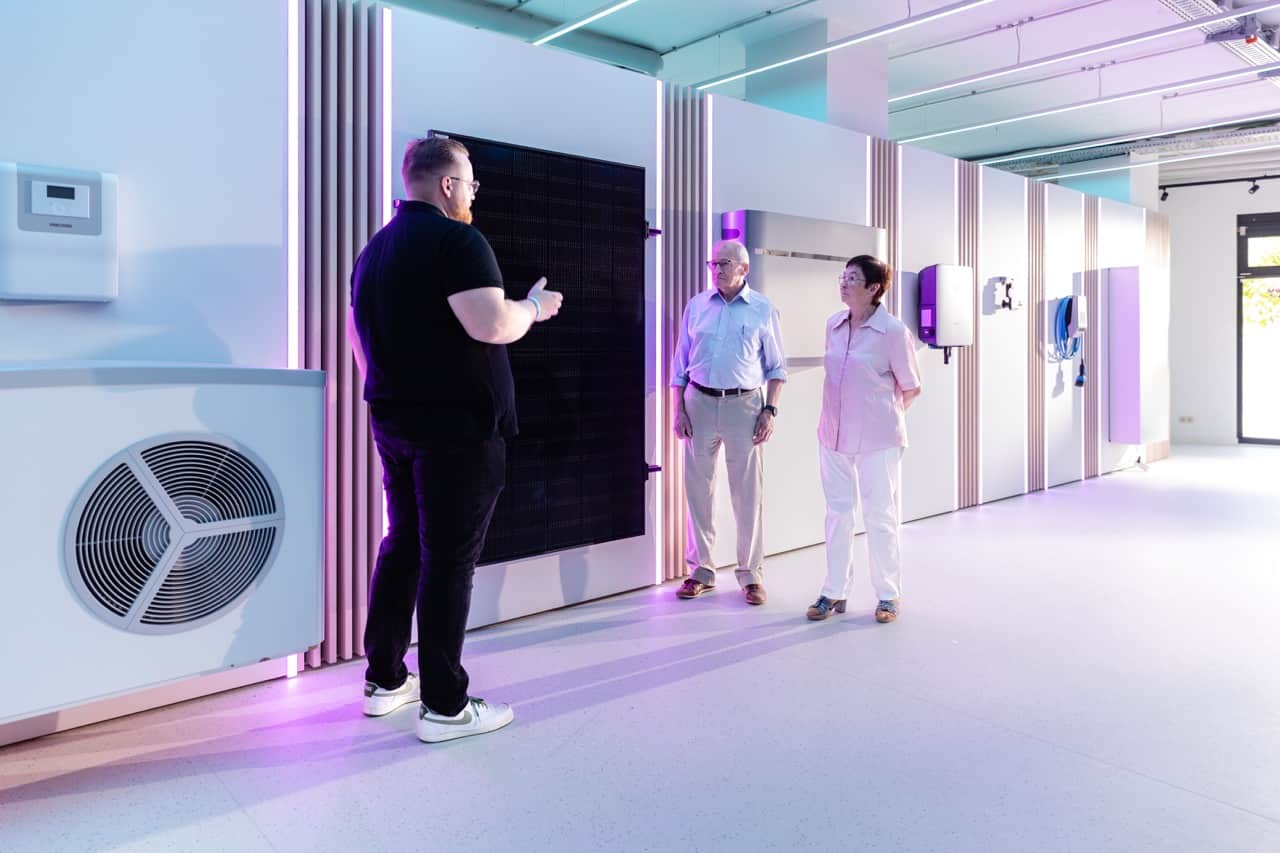
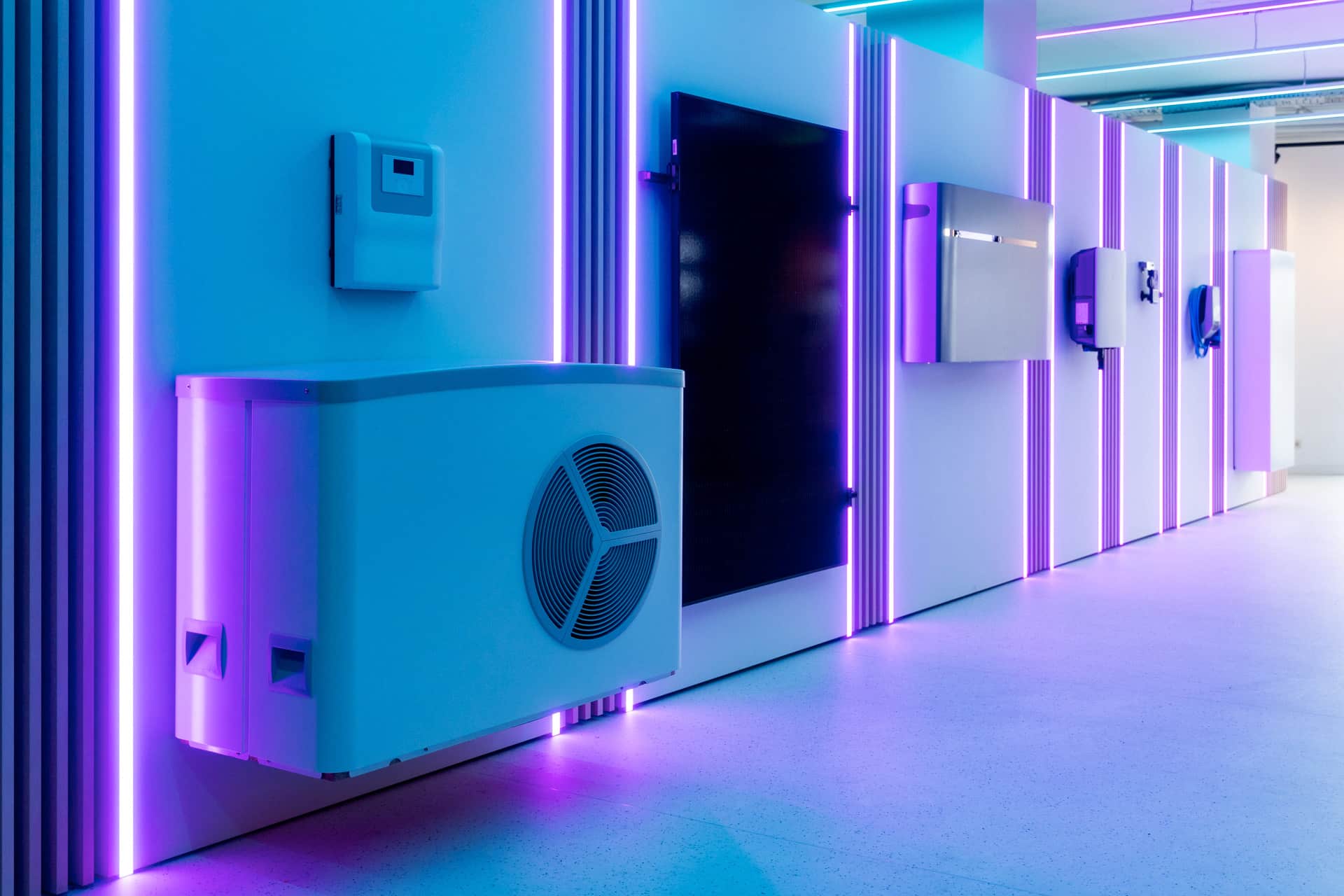
What Warranties Are Available & What Happens If The Equipment is Faulty?
All good quality solar panels, as a general rule, will come with a warranty of around 25 years. This is a considerable period that allows many people peace of mind regarding their solar installation. The component warranties won’t usually change between an owned outright and a no-cost solar system.
One of the main and most notable conditions of these contracts is maintenance and upkeep. Your chosen solar provider will technically retain ownership of the system and, therefore, is also responsible for carrying out any repairs the system may need. Your retailer will monitor the performance of your solar, ensuring that everything is working correctly.
What Happens If I Choose To Terminate My Contract?
It’s challenging to provide a set answer to this question. The penalties for cancelling a solar lease are very much dependent on the specific terms of the contract.
Some providers allow you to choose from options, such as transferring ownership, should you wish to leave. Something to be aware of is that many of the no-cost solar agreements available will contain a clause relating to buyout fees.
Should you want to end your lease, your solar retailer will often require payment from you to cover the remaining cost of the solar system. It's important to think this decision through carefully to ensure that the difference between payments remaining and the predetermined buyout price is feasible.
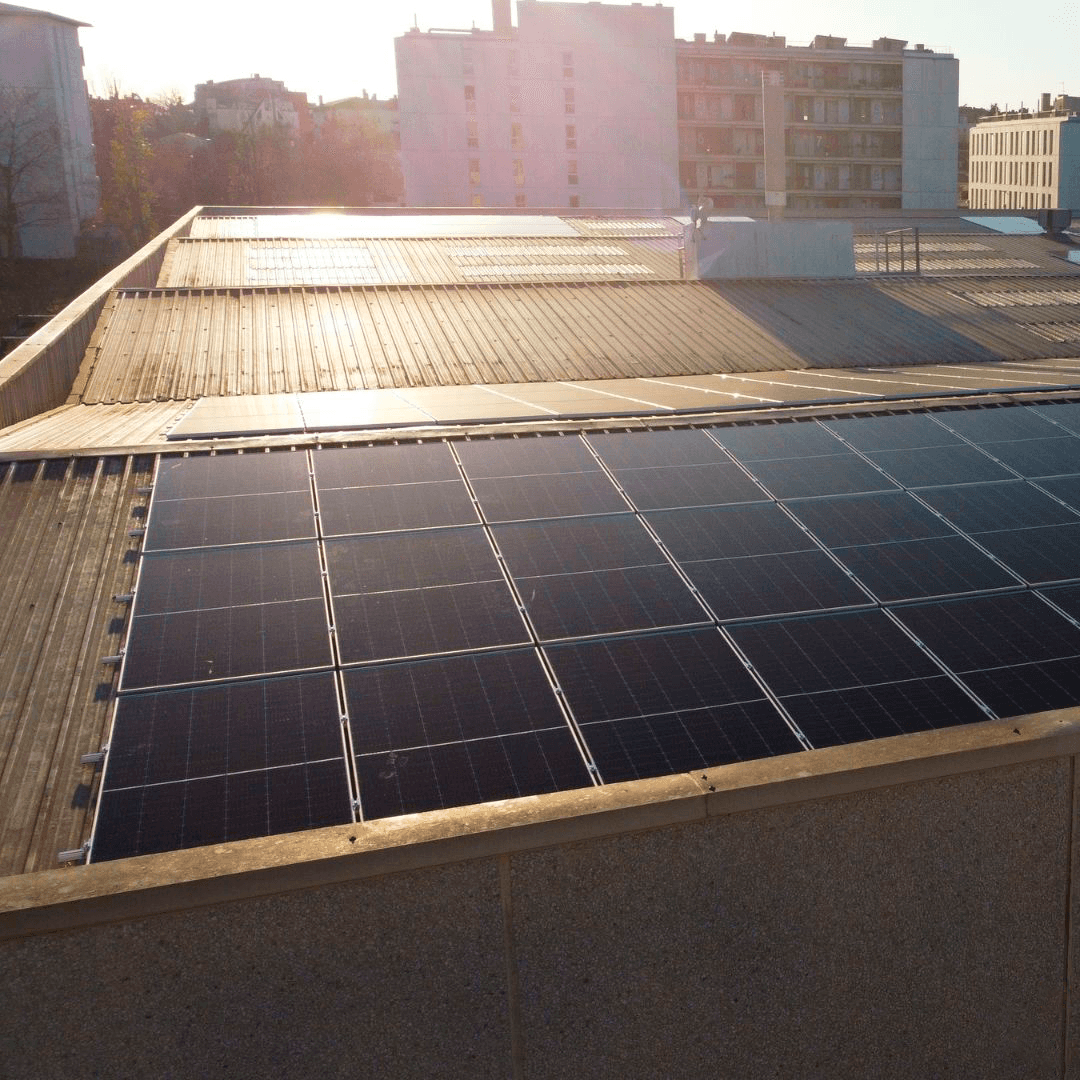
Some Common Misconceptions Around No Cost Solar
Will I Really Save Money With A No Cost Solar System?
Yes! No-cost solar systems are a great way to enjoy solar benefits at a reduced rate. They allow homeowners to power their homes using clean energy solutions and, as such, save money over time. Even though you rent energy or equipment from your solar company, these payments are significantly reduced.
That being said, if the question was, “Will I save as much with a no-cost solar system as I would with an owned outright system?” then the answer would have to be no. A system you own entirely will, of course, save you more money in the long term than a solar leasing agreement due to greater energy management capabilities.

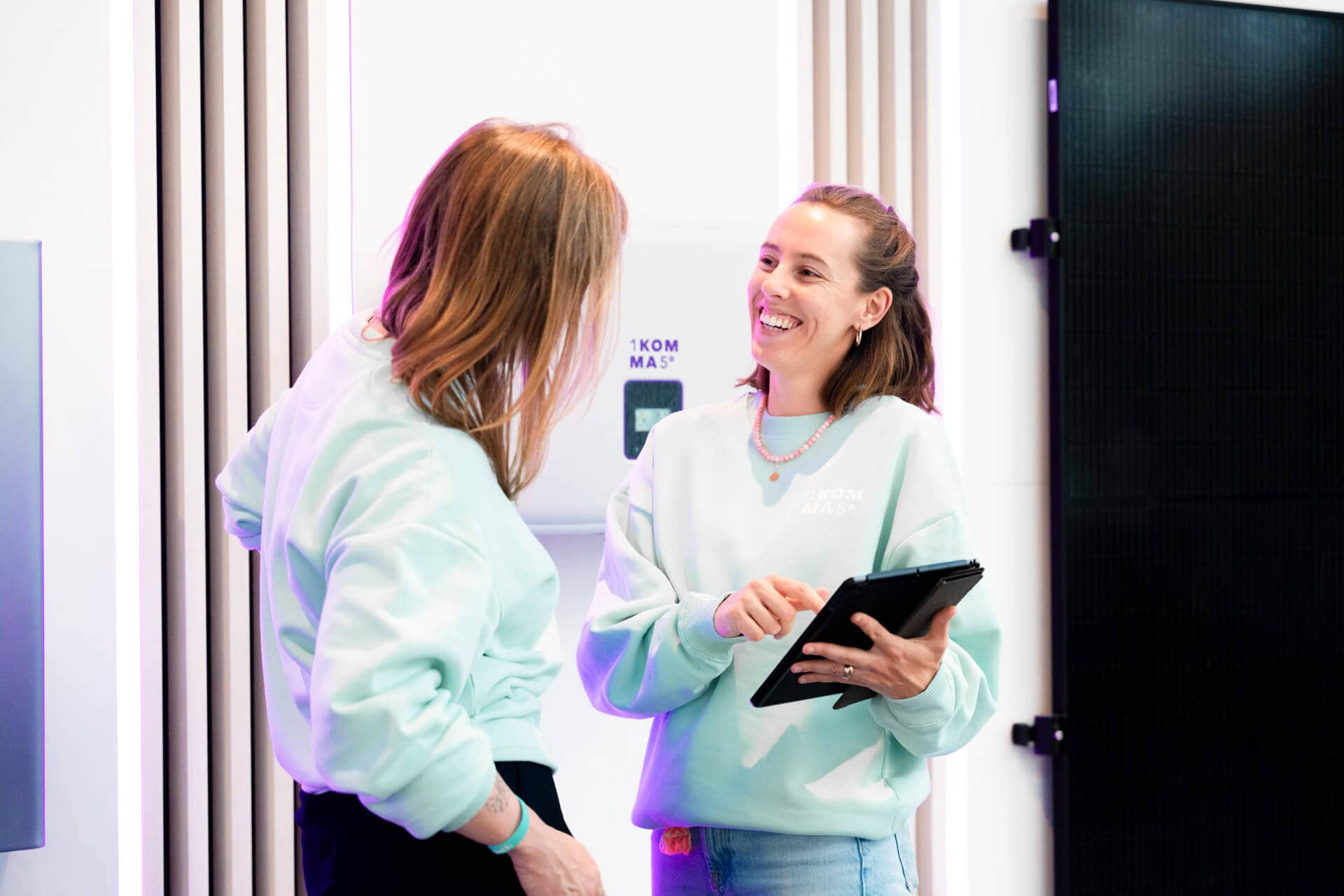
This Offer Is Too Good To Be True
While a solar system that requires an initial investment of $0 seems far-fetched, it is, in fact, possible due to the increase in government rebates lowering the cost of solar power.
The leasing component of this model is the closest thing to a catch. Yes, you will eventually have to pay your solar retailer through fixed payments, but considering these payments are agreed upon and come at a predetermined rate, the amount you’ll be out of pocket is significantly reduced.
The Importance of Finding a Reputable Solar Installer
While $0 solar installations do exist and are a legitimate program offered by many installers, you still need to watch out for misleading offers and dodgy installers. With a deal as good as this one, which already sounds too good to be true, it can be difficult to determine the reliability of the offer.
Reputable solar companies often have many years of experience in the industry. The length of time in business is a good indicator of quality, as it is common for dodgy or illegitimate solar operations to enter and leave the market quickly.
Reviews are another great place to start. Reading about others' experiences with a solar retailer can give you a better idea of the quality of installation and customer support you'll receive if you choose to work with them.
Check that your chosen solar retailer has all the necessary qualifications and accreditations. Your installer should be accredited with the CEC (Clean Energy Council) to ensure that your installation team has a comprehensive understanding of all components and system setup.
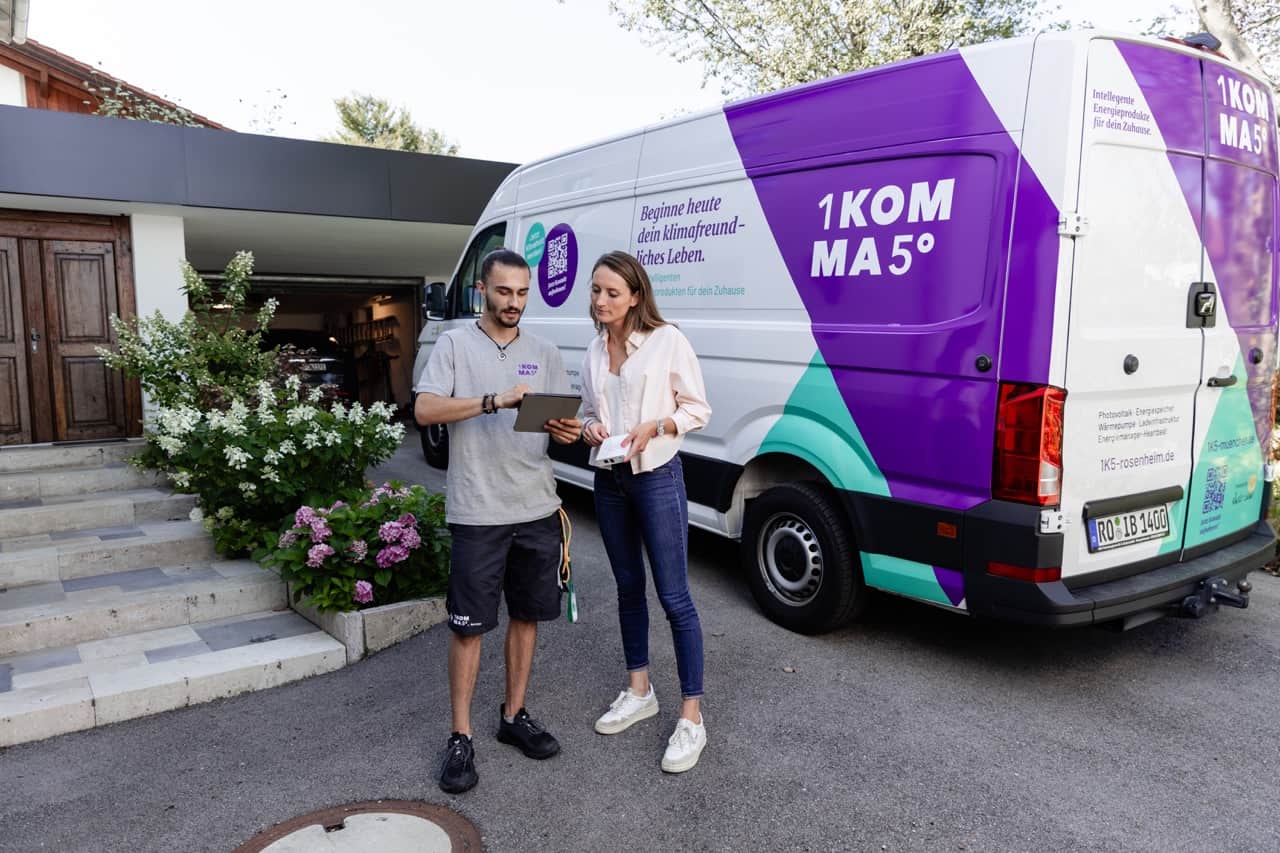
Wrap Up
No-cost solar energy is an excellent way of spreading the gift of new energy! Programs like this do a great job of increasing the accessibility of renewable energy solutions and definitely can be worth considering if you're in the market for solar.
That being said, it's essential to remain aware of any downsides of an agreement such as this.
FAQ
Frequently Asked Questions about Installing Solar Power
How much does it cost to off-grid with solar power?
Taking your home off-grid with a solar system can cost 2-4 times more than installing a standard grid tied solar system. The jump in price is due to the need for additional solar panels, large battery banks, a backup generator and a specialised off-grid inverter in order to handle the fluctuating energy demands associated with stand alone systems. The starting cost is usually around $40,000, this does not include ongoing maintenance costs and fuelling the generator.
What are the main maintenance challenges for off-grid systems?
Off-grid solar systems require far more regular maintenance that your standard grid tied or hybrid solar systems due to their larger size, added components and greater complexity of their setup. This includes servicing the batteries, checking inverter health and ensuring your backup generator runs efficiently. The stakes are also higher with an off-grid system, failure to perform these regular checks and servicing could leave you without power.
What happens if my off-grid solar system runs out of power?
If you choose to take your home off the grid there will come a point where you will run out of solar power. Whether this be because of weather conditions or higher than usual household energy demand. This is why a backup generator is an integral part of an off-grid solar system. This generator is usually powered by petrol or deisel and will provide power to the home until solar production is back up again.
Is it better to go off-grid or use a hybrid solar system?
For the vats majority of people it is better to install a hybrid system, they offer the benefits of solar power generation and energy independence using storage solutions whilst still having the grid to fall back on. While it's awesome to generate, store and use your own energy around the clock, remaining grid tied allows you to export excess solar energy back to the grid for a feed in tariff when production is high and draw from the grid to power your home when production is low. Installing an off-grid system is only really feasible if you live in a remote area with limited grid access or the grid connection fee is extremely expensive (more expensive than the price of an off-grid system).
More Helpful Articles:

1KOMMA5° Blog
Need more information?
Head over to the 1KOMMA5° blog for more helpful tips and other important guides on everything solar, from inverters, panels and batteries to how to make the most of your investment for years to come.